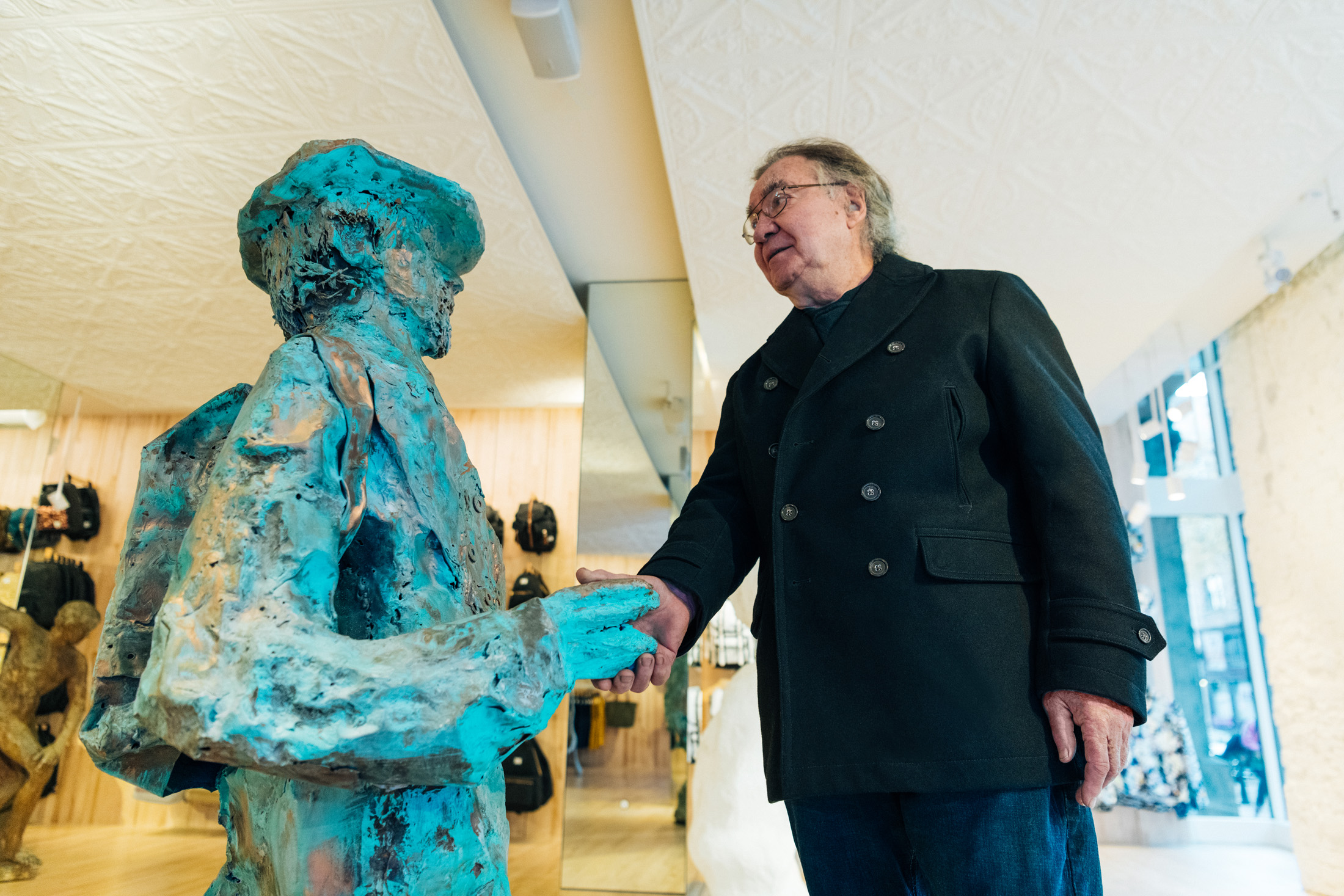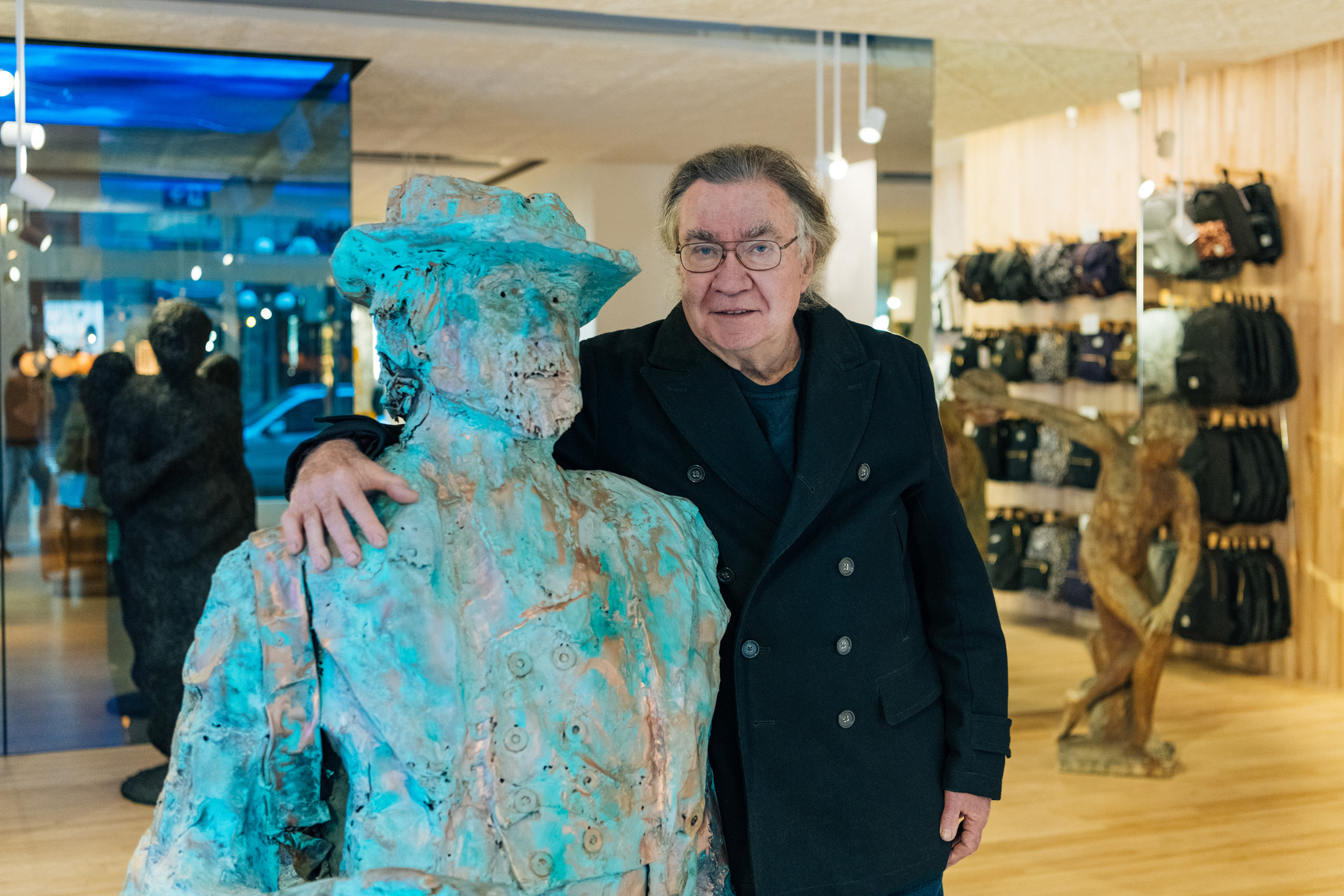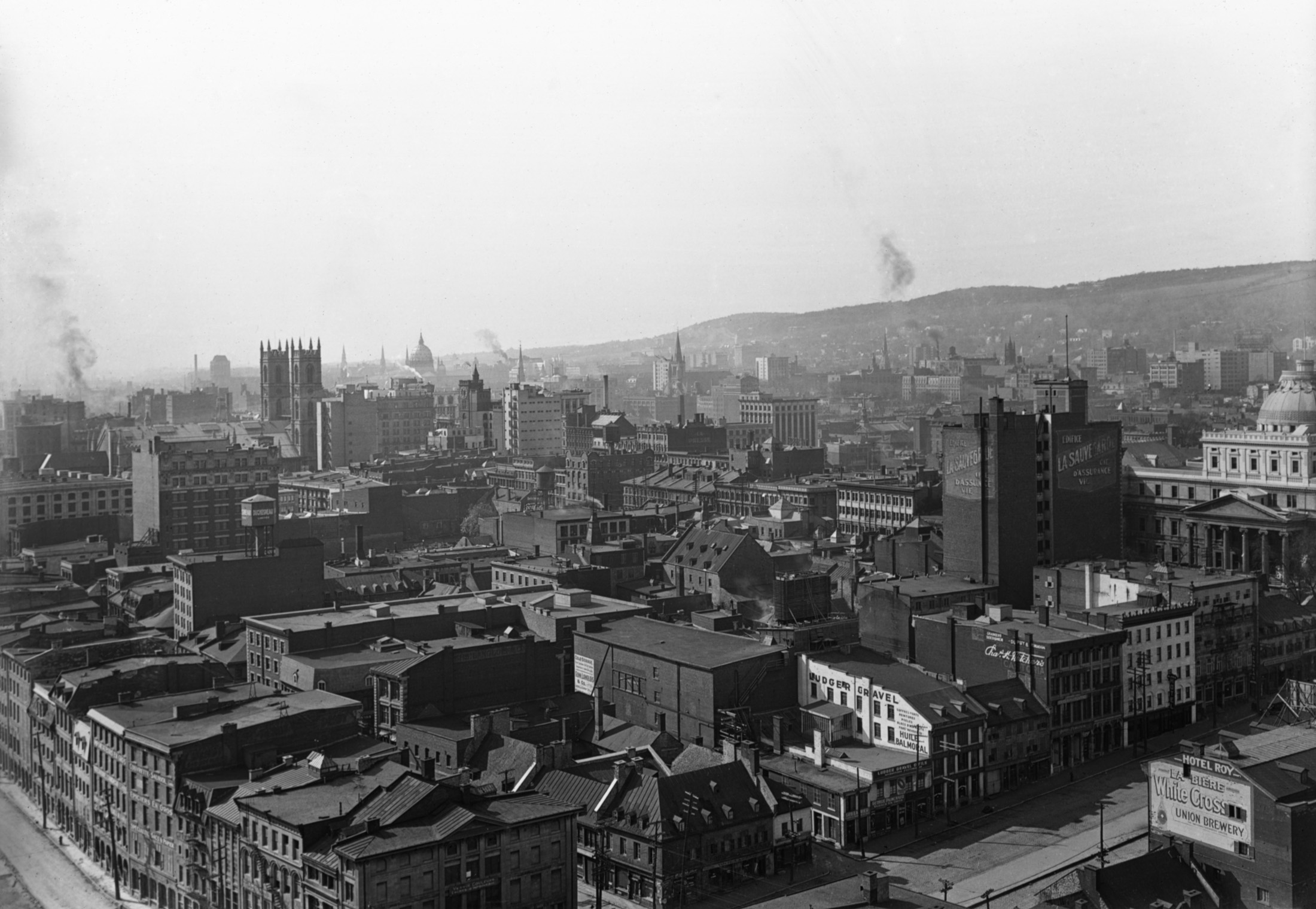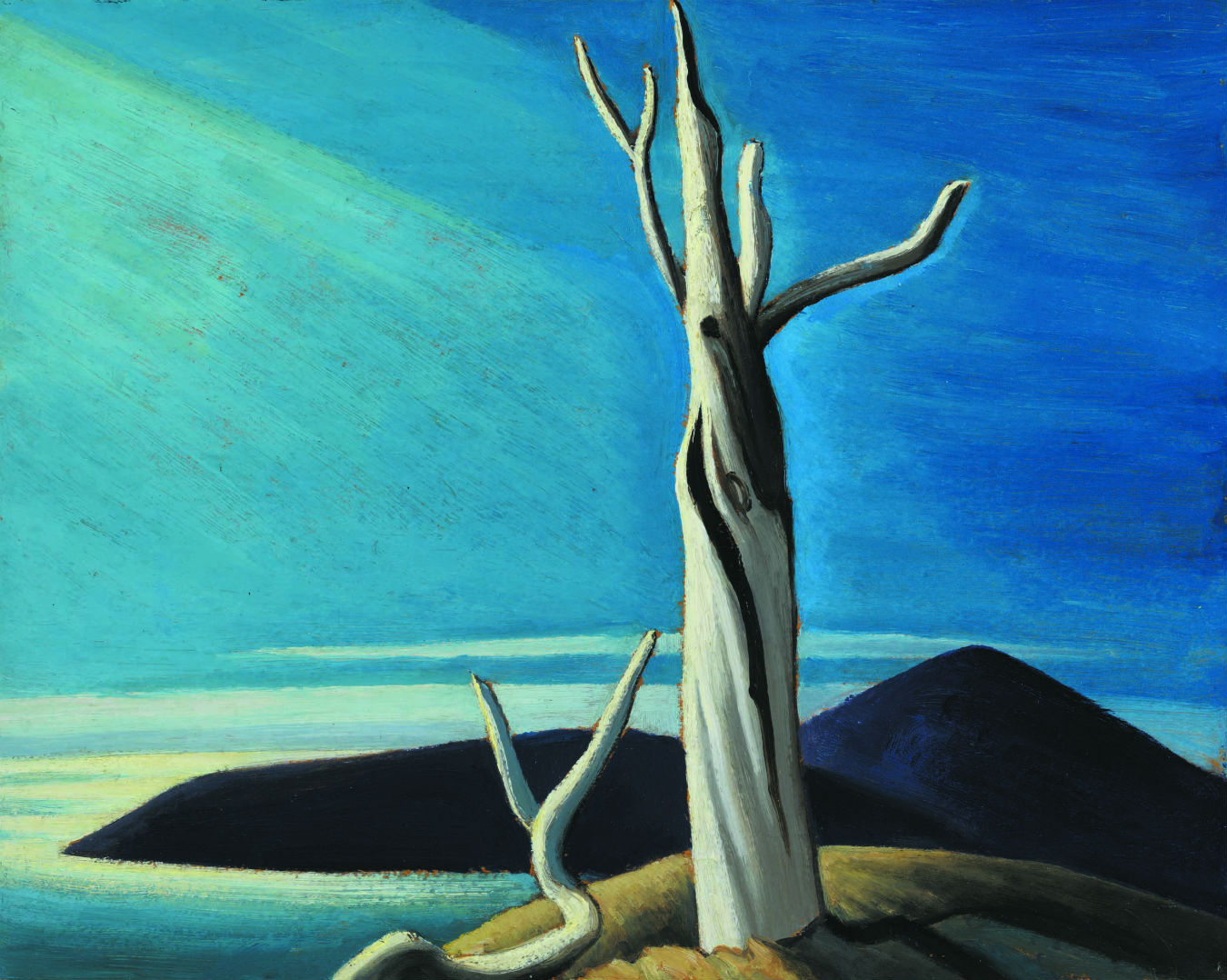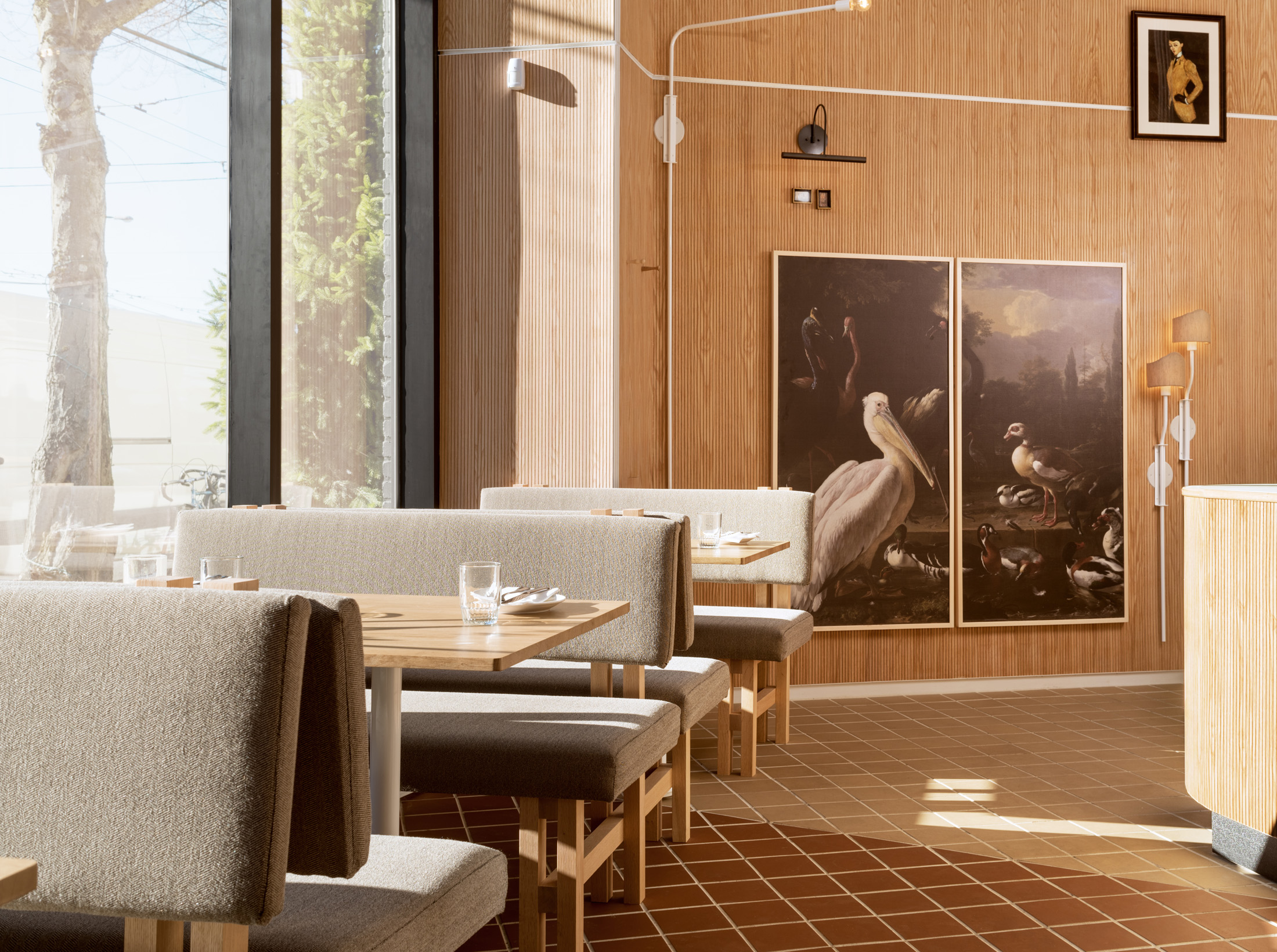Vancouver Welcomes A Second Gassy Jack Statue
The iconic Gastown sculpture gets a little brother.
It’s difficult to think of historical Vancouver icons without John Deighton coming to mind—though you may know him by another name. The English-born sailor and gold prospector earned the nickname “Gassy Jack” for his loquacious nature and love of storytelling. In 1867, he opened a saloon that eventually formed the heart of Vancouver’s first downtown core on the unceded territory of the Musqueam, Squamish, and Tsleil-Waututh peoples. Known to this day as Gastown, the neighbourhood also recognizes its founding father with a copper statue in his likeness, created in the 1970s by B.C. abstract expressionist artist Vern Simpson. The statue moved around several times and was even decapitated by vandals before it found its forever home at Maple Tree Square near the site of Deighton’s original saloon, where he is always surrounded by a crowd of camera-wielding tourists.
Now, decades later, Simpson has created a second Gassy Jack sculpture called Gassy Jack II. Commissioned by Herschel Supply Co., this new interpretation of Deighton will be equipped with a backpack—an appropriate addition given the statue will be on display inside the brand’s flagship store at 347 Water Street. In advance of its unveiling, I spoke to Simpson about his early days, his creative process, and the dramatic reason why this new statue should really be called Gassy Jack III.
A.L.: How did you become an artist?
Simpson: As a child, we had a storage room upstairs with boxes of books I liked to rifle through. One was a book of Rembrandt’s portraits, and I remember thinking, “that’s what I want to do when I grow up.” I would draw endlessly in white, pink, yellow, and blue notepads with a fat soft black pencil. I would see something in passing then recall it while drawing—animal, vegetable, mineral, buildings, trees. I did the same with a succession of cameras. My father made a darkroom in his office and taught me to process and print black-and-white film.
I was always able to draw figures. I could see them in three dimensions, and in addition could “fly”—I could look at an image as from a hilltop and in my mind soar out and over and spiral upwards, and transfer the image to a two-dimensional canvas with the background larger and pulled forward, in the manner of Chinese and Japanese paintings, rather than traditional perspective.
At the University of British Columbia, I studied painting and design. During that time, I acted in a one-act satire by Raymond Hull called The Washing Machine. I played an evangelical washing machine repairman. I’ve been living on the proceeds of creative work, both 2 and 3D, ever since. I have written for a small regional newspaper chain, produced theatre reviews, articles for magazines, co-authored a book about local neighbourhood pubs, and have taught graphic communications.
After UBC, I went on to a Masters degree in Mexico on scholarship, studying mural painting, and for my thesis installed a large historic mural at the university entitled Independencia! which is based on the revolution of 1812 against Spain. It is now protected by the Mexican government as part of their cultural heritage.
How did you come to be involved with Gassy Jack?
Larry Killam [Gastown developer] and I were chatting over a pint in the Cecil Hotel. He told me that he and some partners had just bought the Alhambra Hotel building in Maple Tree Square. He wondered how they could make sure that this became the centre of Gastown redevelopment, instead of where the steam clock stood a few blocks up at Water and Cambie. I thought for a bit then told him that he needed a statue of Gassy Jack. Killam then asked me to make one and so it began. It wasn’t authorized by the City of Vancouver, so it was done secretly. The final stage was assembled in the adjacent Gastown Garage.
What was your creative process for making the new statue, Gassy II?
I used the same technique for both [Gassy II and the first statue]. For Gassy II, I began by researching Gassy Jack online, including archives in Victoria and clothing of the time—from rough and ready miners to Victorian gentlemen, Porkpie hats that were in vogue, and typical backpacks of the era. I then did some drawings to explore his pose, a mild contrapposto—think Michelangelo’s David in Florence, or a model swivelling and turning at the end of a runway. It’s dynamic, goes back to ancient Greece.
Then I needed to source the metal, which I was able to do in Victoria, B.C. I also required specialized tools specific to this form of metalwork, plus welding gear. I began by cutting steel tubing to be shaped into a skeleton, which is a technical term in sculpture, welding it together to form arms legs, spine and top of hat area. The outline of the body and circle or oval contours to define invisible muscle and bone. I also cut fingers of smaller tubing to be added later.
Next, I added the copper skin. To design his clothing, I needed to be a shirt maker, hat maker, and tailor. I used my own body for reference—I had a tailor’s tape and am about the same size as Gassy. Once clad, I began the finer sculpting. I bent and shaped the metal with my hands, pliers, mallets, hammers. Metal rods or eucalyptus branches—a lovely hardwood—were used to hammer and thump.
To a spectator, the sculptor must look like a crazed whirling dervish trying to make up his mind. One really has to have a clear visual image, and it requires three arms, to feel the front, hold the stick, and thump. On the first Gassy Jack, I had a helper who was small enough to crawl inside and hold the cut-off end of a barbell while I did the finishing touches to the front.
As for completion time on the two sculptures, the original took about eight months from start to finish. Gassy Jack II has taken longer because when he was 85 per cent finished, he was almost destroyed in a freak fire that destroyed the studio building. During the firefighting, he was inadvertently run over by an eight-tonne excavator. As a result, poor Gassy II was left a metal pancake that the firemen hauled from the ashes. A new metal work structure had to be designed and built and recovery began. So, the second one took twice as long, altogether, but I think is better for it.
How has your creative process and aesthetic changed since you created the original Gassy Jack, and how does that affect the way you made his little brother?
At 20-feet high [6 metres], the original is much taller than Gassy II. The new version is closer to life-sized and is more of a human caricature, a Falstaffian version. He is posed as if he is greeting you, hand outstretched, leaning slightly back so as to be welcoming but not too much in your space. With a cell phone, he’s just right for a selfie!
How does it feel to have created one of Vancouver’s most famous landmarks and now, to return to him?
Slightly strange of course, the wheel coming full circle.
What would you say to Gassy Jack if you were to sit down for a pint together?
I would ask him if he realizes what he started. One hundred and fifty years later and this historic town is a reinvigorated commercial district named after him. I’d [also] ask him what he thinks of life today. I think he’d tell us all to calm down, slow down the pace, to stop, and visit. He’d also tell you that his name is not Gassy. That’s a nickname—Victorian slang for loquacious storyteller.
From November 7, Vern Simpson’s Gassy Jack II will be on display in Herschel’s flagship store at 347 Water Street, alongside other figurative sculpture work by Lower Mainland artists.
For more of Simpson’s artwork, visit his Pender Island studio, vernsimpson.com, or locations around the city, including the Vancouver Hyatt Regency and the Fairmont Chateau Whistler.
Photo via Flickr, Asipos49.
_________
Never miss a story. Sign up for NUVO’s weekly newsletter.





